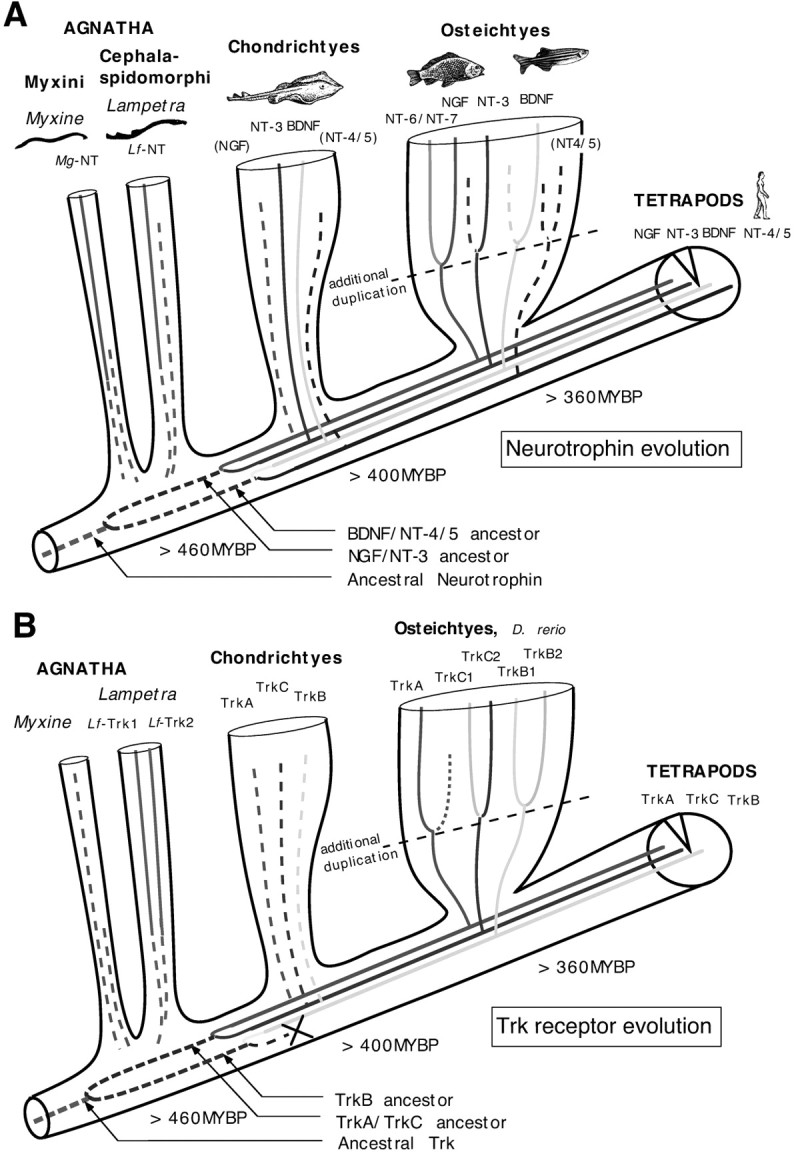Fig. 6.

Schematic illustration of the phylogenetic relationship between jawless fish, jawed fish, the common vertebrate lineage, and the suggested gene duplications leading to the extant neurotrophin and Trk receptor gene homologs. The diagram illustrates the divergence of branches representing jawless fish (Agnatha), cartilage fish (Chondrichtyes), and bony fish (Osteichtyes) from the tetrapod lineage. The neurotrophin (A) and Trk receptor (B) gene families are illustrated within the branches, with suggested duplications shown as line forks. Two subsequent duplication events are suggested in the early chordate/vertebrate lineage. Our results strongly suggest that the second duplication occurred after the divergence of lampreys (Cephalaspidomorphi) but before the divergence of cartilaginous fish and gave rise to the extant neurotrophin and Trk gene families. We suggest that an additional duplication occurred in the bony fish lineage giving rise to the hitherto found NGF, TrkB, and TrkC paralogs in bony fish. It is not clear whether all bony fishes were affected or whether the duplication occurred exclusively in the branch including carp, zebra, and platy fish (Euteleostei). The dates of the divergence of ancestors to extant jawless and ray-finned fish from the common vertebrate lineage are based on fossil records (Benton, 1993).MYBP, Million years before present.
